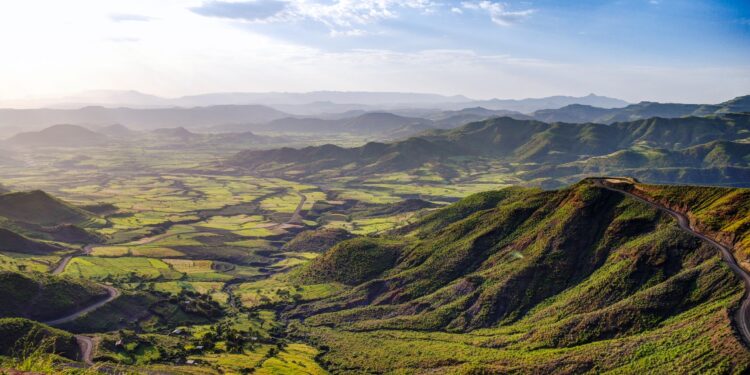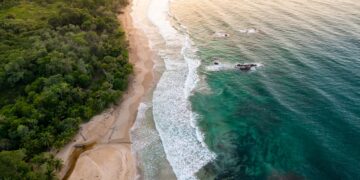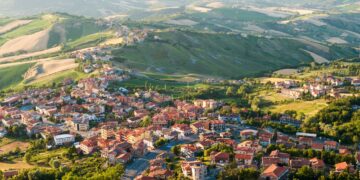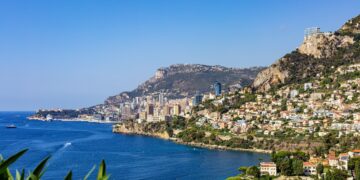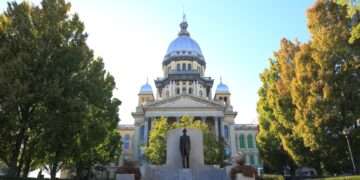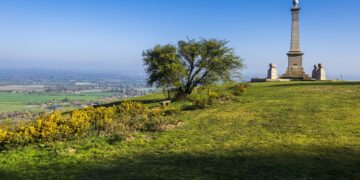Ethiopia, with its diverse landscapes, rich culture, and historic landmarks, has served as an enchanting backdrop for numerous films, TV shows, and books, offering a unique blend of natural beauty and cultural charm. Journey with us as we explore the locations of 10 famous films shot in Ethiopia, delve into TV shows and animated films set in this vibrant country, and uncover hidden gems known only to locals. But before we start, let’s take a moment to appreciate the cinematic allure of Ethiopia, a country that has captivated filmmakers and audiences alike with its stunning visuals and intriguing narratives.
The Mesmerizing Allure of Ethiopia in Cinema
Ethiopia’s cinematic allure stems from its diverse landscapes, from the rugged Simien Mountains to the ancient rock-hewn churches of Lalibela and the bustling streets of Addis Ababa. These locations have provided filmmakers with a rich tapestry of visuals, complementing their narratives with a palpable sense of place and culture.
The country’s history and culture, steeped in tradition and yet vibrantly alive, add depth and authenticity to the stories set here. Films shot in Ethiopia not only depict the country’s physical beauty but also delve into its soul, offering viewers a glimpse into its traditions, struggles, and triumphs.
As a film enthusiast, I have always been fascinated by the power of cinema to transport audiences to different places and immerse them in diverse cultures. And Ethiopia, with its unique blend of ancient history and contemporary vibrancy, is a compelling destination for such cinematic exploration.
Top 10 Famous Films Shot in Ethiopia
From historical dramas to gripping documentaries, Ethiopia’s cinematic landscape has been utilized in a variety of genres. Here are 10 famous films shot in Ethiopia that showcase the country’s unique charm:
- Black Gold (2006): This poignant documentary explores the global coffee trade, focusing on the coffee farmers of Ethiopia. The film offers breathtaking views of the Ethiopian coffee plantations and a deep insight into the country’s coffee culture.
- The Athlete (2009): This biographical drama tells the story of Abebe Bikila, an Ethiopian marathon runner who won the Olympics running barefoot. The film beautifully captures the spirit of Ethiopia and its people.
- Difret (2014): Set in rural Ethiopia, this film tackles the issue of child marriage, showing the country’s landscape and shedding light on its societal norms.
- Lamb (2015): This film, the first Ethiopian movie selected for the Cannes Film Festival, tells the story of a young boy and his pet sheep, offering a glimpse into rural life in Ethiopia.
- Crumbs (2015): This post-apocalyptic surreal film, while mostly set in a fantastical world, was shot in Ethiopia, showcasing the stark beauty of its landscapes.
- Sweetness in the Belly (2019): Based on a novel, the film tells the story of a British woman raised in Morocco who becomes a refugee in Ethiopia. The film highlights the country’s cultural and religious diversity.
- Running Against the Wind (2019): This drama follows the lives of two young boys from rural Ethiopia with different dreams, providing a look into the country’s passion for athletics.
- Enchained (2019): This historical drama set in 19th century Ethiopia explores the country’s traditional religious laws and customs, filmed amidst the stunning Ethiopian landscape.
- Red Sea Diving Resort (2019): Although a Hollywood production, the film was shot in Namibia and South Africa but is set in Sudan and Ethiopia. It tells the story of Israeli Mossad agents who rescue and evacuate Jewish-Ethiopians to Israel from Sudan.
- The Boy Who Harnessed the Wind (2019): While the story is set in Malawi, parts of the film were shot in Ethiopia, due to its similar landscapes and better filming infrastructure.
These films, with their diverse narratives and genres, have utilized the captivating backdrop of Ethiopia to enhance their storytelling, immersing viewers in the visual and cultural richness that the country offers.
5 TV Shows Set in Ethiopia
While primarily a destination for filmmakers, Ethiopia has also been featured in various TV shows. These shows, ranging from documentaries to reality series, have used the country’s unique settings to enhance their narratives:
- Anthony Bourdain: Parts Unknown (2013): In an episode of this popular travel and food show, Anthony Bourdain explores Ethiopia’s culinary scene, traveling through its bustling markets and savoring its traditional dishes.
- The Amazing Race (2001): In the reality game show’s sixth season, contestants found themselves in Ethiopia, participating in challenges that highlighted the country’s culture and landmarks.
- Tribe (2005): This BBC series explores indigenous and tribal cultures around the world. The episode in Ethiopia gives viewers an intimate look into the lives of the Hamar tribe in the country’s southern region.
- Human Planet (2011): Ethiopia features in multiple episodes of this BBC documentary series that explores humans’ relationship with nature. The episodes showcase the country’s unique landscapes and the people’s way of life.
- Simon Reeve in Ethiopia (2015): Travel journalist Simon Reeve embarks on an adventurous journey through Ethiopia, exploring its ancient traditions, rich history, and stunning landscapes.
These TV shows capture the essence of Ethiopia, allowing audiences to experience its unique allure through a diverse array of narratives and themes.
5 Animated Films Set in Ethiopia
While not the conventional location for animated films, Ethiopia has served as an inspiration for a few animated adventures:
- Bilal: A New Breed of Hero (2015): Though not explicitly set in Ethiopia, this animated feature is based on the true story of Bilal ibn Rabah, an African slave who became a close companion of the Prophet Muhammad. The film portrays settings and cultures reminiscent of ancient East Africa.
- Zarafa (2012): This French animated film tells the story of a young boy and a giraffe on their journey from Africa to Paris. While the story begins in Sudan, it also portrays the broader East African region, including Ethiopia.
- The Lion King (1994): Although the movie is set in a fictional location, the landscapes are inspired by various regions across Africa, including the Ethiopian highlands. The film’s narrative also resonates with the diverse wildlife found in Ethiopia.
- Madagascar (2005): While the movie is set on the island of Madagascar, it features a range of African animals, some of which, like the Fossa, are native to Ethiopia.
- Khumba (2013): This South African movie features a host of African animals going on a journey across the continent. Some scenes, especially those depicting the diverse African landscapes, are reminiscent of Ethiopian terrain.
While Ethiopia may not be a common setting for animated films, its diverse wildlife and unique landscapes have inspired certain elements and scenes in these movies.
Famous Books Set in Ethiopia: Classic and Contemporary
Ethiopia’s rich history and diverse culture have inspired numerous authors, resulting in a range of books set in the country. Here are three classic and three contemporary books that bring the spirit of Ethiopia to life:
Classic Books:
- “The Emperor” by Ryszard KapuÅ›ciÅ„ski: This non-fiction book provides a unique perspective on the reign and downfall of Emperor Haile Selassie, offering a glimpse into Ethiopia’s historical and political landscape.
- “Sweet and Sour Milk” by Nuruddin Farah: While the author is Somali, the book—set during the Ogaden War between Ethiopia and Somalia—provides a deep insight into the region’s politics and the complex relationship between the two countries.
- “Notes from the Hyena’s Belly” by Nega Mezlekia: This memoir of the author’s childhood in Ethiopia during the Derg regime provides a deeply personal view of a tumultuous period in the country’s history.
Contemporary Books:
- “Cutting for Stone” by Abraham Verghese: This novel tells the story of twin brothers born in Addis Ababa, weaving a tale of love and betrayal against the backdrop of Ethiopia’s political upheaval.
- “Beneath the Lion’s Gaze” by Maaza Mengiste: Set during the Ethiopian Revolution, this book explores the impact of political turmoil on a family, offering a poignant look at Ethiopia’s recent past.
- “The Wife’s Tale” by Aida Edemariam: This biography of the author’s grandmother offers a century-long view of Ethiopia, from its feudal past to the modern era, through the eyes of one woman.
These books, both classic and contemporary, offer readers a deeper understanding of Ethiopia’s rich culture and tumultuous history, presenting a multifaceted picture of the country.
Exploring Ethiopia’s Filming Locations – Where to Go
Ethiopia, with its stunning landscapes and historic landmarks, has long been a draw for filmmakers. If you’re keen to follow in the footsteps of movie stars and explore the cinematic history of this diverse country, here are some essential filming locations in Ethiopia:
- Addis Ababa: The vibrant capital city has been a setting for numerous films, with its bustling markets, historic landmarks, and distinctive architecture.
- Lalibela: Known for its ancient rock-hewn churches, Lalibela offers a unique backdrop for any film. Its historical significance and unique architecture have made it a favorite among filmmakers.
- Simien Mountains: With their dramatic cliffs and stunning vistas, the Simien Mountains have featured in several films, providing a breathtaking setting for epic narratives.
- Danakil Depression: One of the hottest places on earth, this surreal landscape of lava lakes and salt plains has been used in films seeking otherworldly settings.
- Lake Tana: As the source of the Blue Nile and home to historic monasteries, Lake Tana offers a blend of natural beauty and cultural significance, making it an appealing location for filmmakers.
Whether you’re standing at the top of the Simien Mountains or wandering through the rock-hewn churches of Lalibela, Ethiopia offers a captivating backdrop for movie fans and tourists alike.
Where to Sleep in Ethiopia: 3 Cheap and 3 Luxury Options
Ethiopia, with its diverse landscapes and rich culture, offers a range of accommodations, from budget-friendly guesthouses to luxury resorts. Here are three cheap and three luxury options for your stay in Ethiopia:
Budget-Friendly Options:
- Addis Regency Hotel, Addis Ababa: Located near major tourist sites, this budget-friendly hotel offers comfortable rooms and a friendly atmosphere.
- Baro Hotel, Addis Ababa: Known for its historic charm, the Baro Hotel offers affordable rooms in a central location.
- Lal Hotel, Lalibela: Situated close to the rock-hewn churches of Lalibela, this budget hotel offers basic but comfortable accommodation.
Luxury Options:
- Sheraton Addis, Addis Ababa: Offering luxury accommodations in the heart of the capital, the Sheraton Addis provides top-tier service and amenities, including a spa, swimming pools, and multiple dining options.
- Limalimo Lodge, Simien Mountains: For those seeking adventure in comfort, this eco-lodge offers stunning views of the Simien Mountains, modern rooms, and delicious food.
- Kuriftu Resort & Spa, Bishoftu: This lakeside resort offers luxury chalets, a spa, and a gourmet restaurant, making it an ideal spot for relaxation after exploring the country.
Whether you choose budget-friendly guesthouses or luxury resorts, each option offers a unique way to experience Ethiopia’s diverse landscapes and rich culture.
Where to Eat in Ethiopia: 3 Budget and 3 Luxury Options
Ethiopia’s culinary scene is as diverse as its landscapes, offering a range of dining options that cater to budget travelers and luxury seekers alike. Here are three budget and three luxury options for dining in Ethiopia:
Budget Options:
- Kategna Restaurant, Addis Ababa: This local favorite offers a range of traditional Ethiopian dishes at affordable prices.
- Yod Abyssinia, Addis Ababa: Known for its cultural performances and traditional Ethiopian cuisine, Yod Abyssinia provides a memorable dining experience without breaking the bank.
- Four Sisters Restaurant, Gondar: Located near the historic royal enclosure in Gondar, this restaurant offers traditional Ethiopian food in a casual setting.
Luxury Options:
- Addis Ababa Restaurant, Addis Ababa: Offering a fusion of Ethiopian and international cuisine, this upscale restaurant provides a gourmet dining experience.
- Antica Restaurant, Addis Ababa: Known for its Italian cuisine and wine selection, Antica provides a luxurious dining experience in the heart of the city.
- The Lime Tree, Bahir Dar: Located by Lake Tana, this restaurant offers a mix of Ethiopian and international dishes in a beautiful lakeside setting.
From sampling traditional Ethiopian dishes in local eateries to enjoying gourmet meals in upscale restaurants, Ethiopia’s culinary scene offers something for everyone.
Detailed Itinerary: Exploring Ethiopia’s Filming Locations Day by Day
Embark on a cinematic journey through Ethiopia, exploring the locations of famous films shot in this diverse country. Here’s a detailed itinerary to guide your exploration:
Day 1: Addis Ababa
Begin in the capital city, exploring locations featured in films like “Sweetness in the Belly” and “The Athlete.” Visit the National Museum to see Lucy, the famous early hominid, and roam the bustling Mercato, one of Africa’s largest open-air markets. End your day with dinner at a traditional Ethiopian restaurant.
Day 2: Bahir Dar and Lake Tana
Head north to Bahir Dar and explore Lake Tana, the source of the Blue Nile and a location in several documentaries. Visit the lake’s historic monasteries and enjoy the sunset over the water.
Day 3: Gondar
Travel to Gondar, known as the “Camelot of Africa,” and explore the Royal Enclosure, a UNESCO World Heritage site used in historical films.
Day 4: Simien Mountains
Venture into the Simien Mountains, a stunning location featured in several adventure films. Spend the day hiking, spotting wildlife, and soaking in the breathtaking views.
Day 5: Lalibela
Fly to Lalibela, famous for its rock-hewn churches that have been featured in numerous films. Spend the day exploring these wonders of architecture and history.
Day 6: Danakil Depression
Embark on an adventure to the Danakil Depression, one of the hottest places on earth. This surreal landscape has been used in films seeking otherworldly settings.
Day 7: Aksum
Travel to Aksum, the ancient capital of the Aksumite Empire, featured in historical dramas and documentaries. Visit the obelisks and the Church of St. Mary of Zion, believed to be the resting place of the Ark of the Covenant.
Through this itinerary, you’ll be able to experience Ethiopia’s cinematic landscapes firsthand, immersing yourself in the settings of your favorite films.
Cryptid Legends and Curiosities About Ethiopia’s Film Industry
Beyond its cinematic appeal, Ethiopia is a country teeming with legends and curiosities. For instance, it’s home to the legend of the Ark of the Covenant, believed to be housed in the Church of St. Mary of Zion in Aksum. This legend has intrigued filmmakers and audiences, inspiring films like “Indiana Jones: Raiders of the Lost Ark.”
Another captivating legend is that of the “Nile crocodile man,” a cryptid creature said to dwell in the waters of Lake Tana. While its existence is unproven, the tales add an element of mystery and intrigue to Ethiopia’s cinematic locations.
The Ethiopian film industry, often referred to as “Ethiopiawood,” has been growing steadily, with an increasing number of films being shot in the country. This growth has led to an upsurge in local talent and film institutions, adding to the vibrancy of Ethiopia’s film scene.
Hidden Gems: Lesser-Known Filming Locations in Ethiopia
Beyond the well-known locations, Ethiopia has numerous hidden gems that have served as filming locations:
- Harar: Known for its ancient walled city, Harar has been the setting for several films, offering a glimpse into Ethiopia’s Islamic heritage.
- Bale Mountains: With their stunning landscapes and wildlife, the Bale Mountains provide a breathtaking backdrop for nature documentaries and adventure films.
- Awash National Park: Known for its wildlife and stunning waterfalls, this national park has been used in several nature documentaries.
- Tiya: This archaeological site, home to ancient stelae (grave markers), offers a unique setting for historical dramas and documentaries.
- Konso Cultural Landscape: A UNESCO World Heritage Site, this location offers a glimpse into the traditional life of the Konso people and has been featured in several cultural documentaries.
These hidden gems of Ethiopia provide picturesque, evocative settings, adding a unique character to any film.
What to Pack for a Film-Themed Trip to Ethiopia
Packing for a film-themed trip to Ethiopia requires considering the country’s diverse climates and cultural norms. Here’s what you need to pack:
- Clothing: Ethiopia has a wide range of climates, from the cool highlands to the hot lowlands. Pack lightweight clothing for the day, warm layers for the cooler highland evenings, and rain gear if you’re visiting during the rainy season.
- Footwear: Comfortable walking shoes are a must for exploring filming locations. If you plan on hiking in the Simien or Bale Mountains, consider packing hiking boots.
- Accessories: A sun hat, sunglasses, and sunscreen are essential to protect against the strong African sun. Don’t forget a reusable water bottle to stay hydrated.
- Gear: A camera is a must for capturing your own cinematic shots. Consider bringing spare batteries and memory cards.
- Cultural Considerations: When visiting religious sites, modest dress is required. Women should carry a scarf to cover their heads.
Packing appropriately will ensure you’re prepared to explore Ethiopia’s diverse filming locations comfortably and respectfully.
Transportation Tips for Getting Around Ethiopia’s Filming Locations
Navigating Ethiopia’s diverse landscapes can be an adventure in itself. Here are some transportation tips for exploring Ethiopia’s filming locations:
- Domestic Flights: With its vast size, taking domestic flights can save you time when traveling between major cities and regions.
- Car Hire: Hiring a car with a driver is a common way to get around in Ethiopia, especially for longer journeys or when visiting remote filming locations.
- Public Transport: Buses and minibuses are the main forms of public transport in Ethiopia and are a cheap way to travel. However, they can be crowded and may not reach more remote locations.
- Walking: Many historic sites, like the rock-hewn churches of Lalibela or the castles of Gondar, are best explored on foot.
- Guided Tours: Consider joining a guided tour, especially for challenging areas like the Danakil Depression or the Simien Mountains.
Travel Documents Needed for Visiting Ethiopia
When planning a trip to Ethiopia, ensure you have the correct travel documents:
- Passport: Your passport should be valid for at least six months from the date you plan to leave Ethiopia.
- Visa: Most visitors will need a visa to enter Ethiopia. You can apply for a tourist visa online or obtain it on arrival at Addis Ababa Bole International Airport.
- Vaccination Certificate: Proof of yellow fever vaccination is required if you are coming from a country with risk of yellow fever.
- Travel Insurance: It’s recommended to have travel insurance that covers health emergencies and evacuation.
Having these documents in order will help ensure a smooth journey as you explore the cinematic landscapes of Ethiopia.
Conclusion: Your Ultimate Ethiopia Film Tour Guide
From the bustling streets of Addis Ababa to the dramatic landscapes of the Simien Mountains, Ethiopia offers a unique cinematic journey. Whether you’re a film buff or a travel enthusiast, this guide will help you explore the country’s famous filming locations, discover its hidden gems, and immerse yourself in its rich culture and history. So pack your bags, charge your camera, and get ready for your Ethiopian film adventure!


